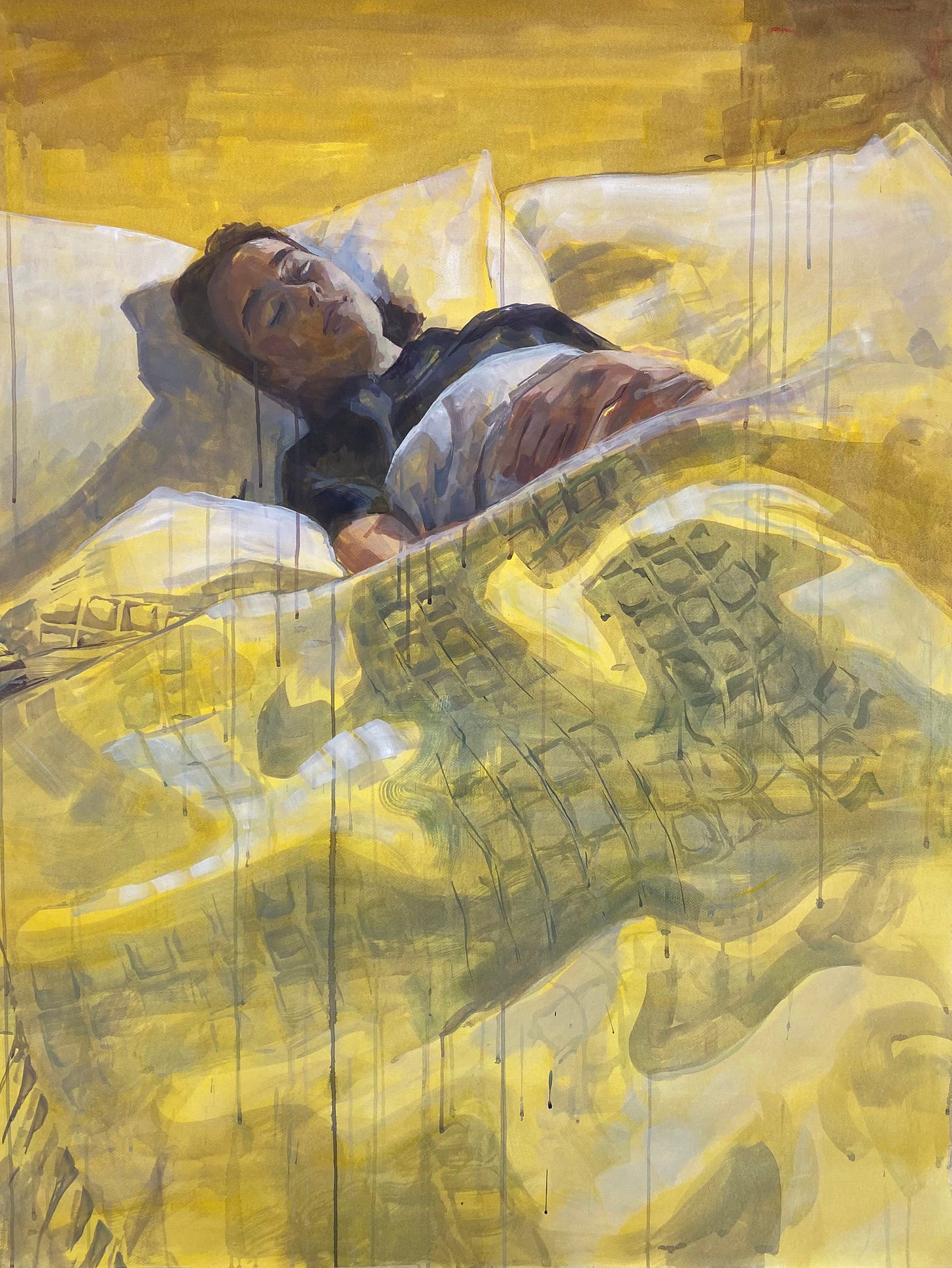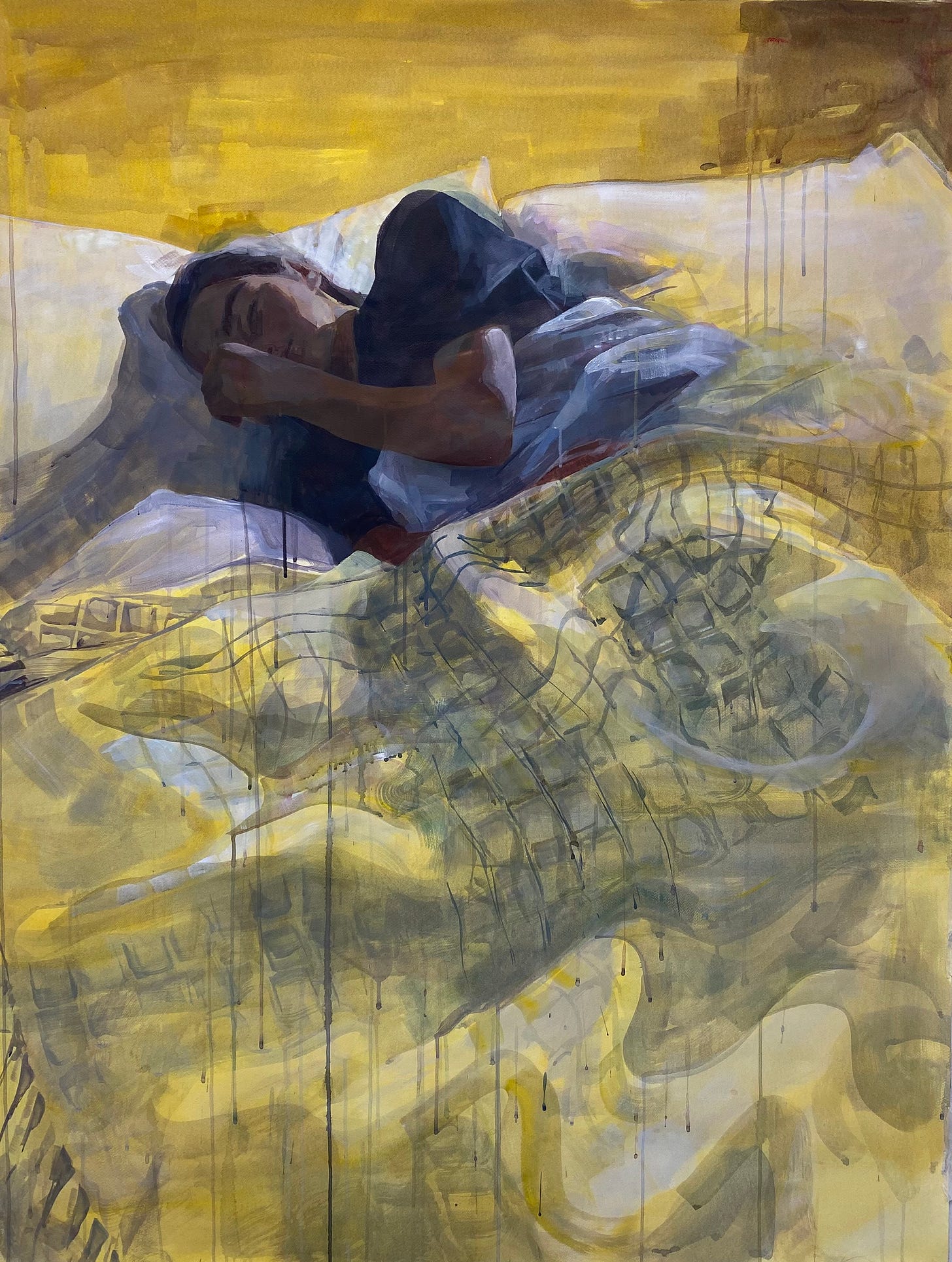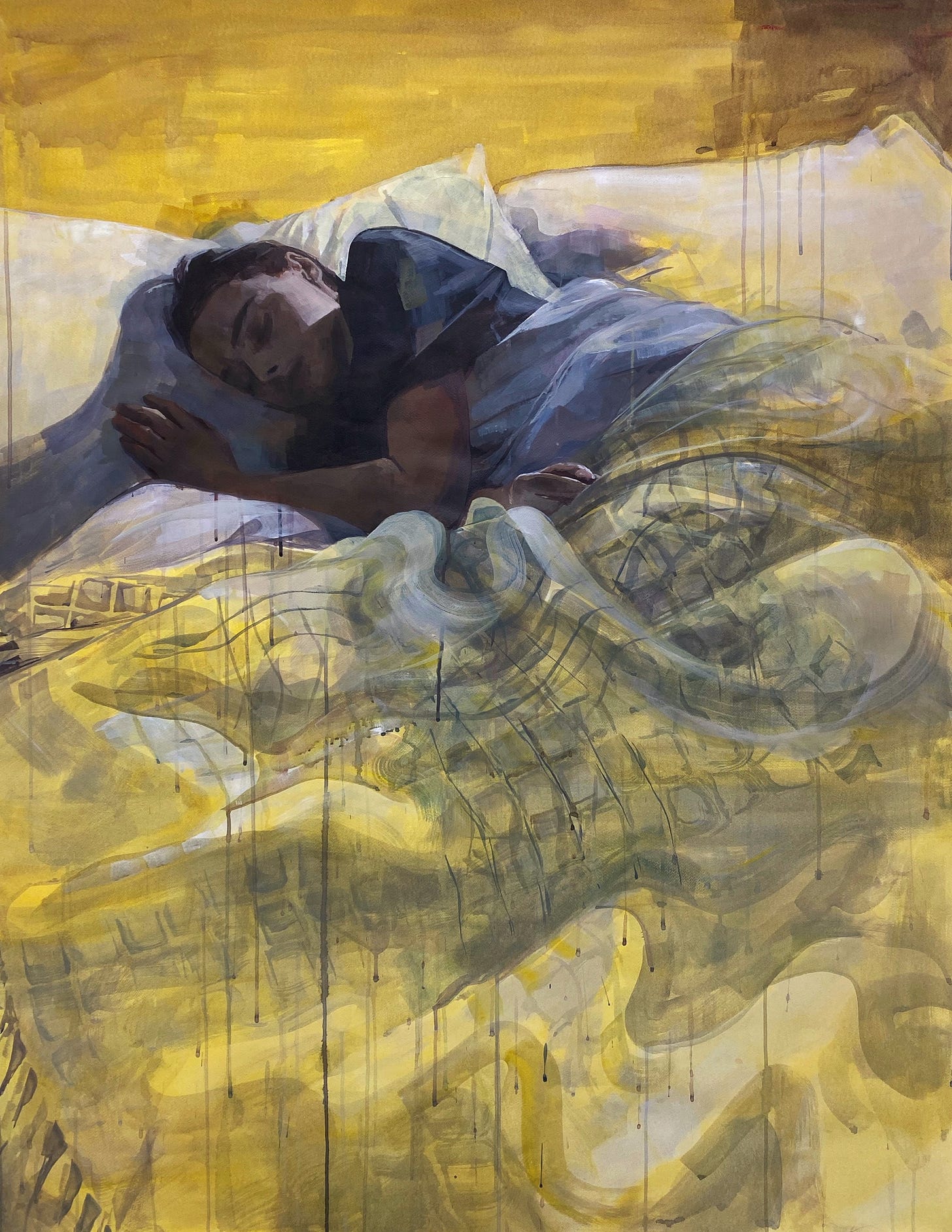Thinking about how the physicality of making guides the outcome. Scroll to the end for our “We Invite You…” prompts
I’ve been reflecting on a piece I made a little while ago, Hypnagogia II, and wanted to share some thoughts.
The piece explores the liminal space (a transitional space) between waking and sleeping. The figure was painted at each stage of the turn before being photographed and reworked for the next frame, and the final piece exists as both a painting, layered with previous states of being, and as a digital animation.
I think it’s interesting how art evolves as you make it. Original intentions might still be present (in the case of Hypnagogia II, they were) but sometimes they shift, or we see them from a new perspective through the physical process of making the piece.
Hypnagogia II is a large painting (150 x 115cm), and I used acrylics and made the work standing, so the act itself of painting was bodily. Gestural marks require full body movements, and brushstrokes become abstracted when viewed close up, so I was stepping back often to see the painting as a whole - you become physically involved in the process, forming a kind of dance.
I like to think about the interaction of the two figures (painted figure and artist) - the passing moment during which the animated figure turns over in bed, and the (much longer) stretch of time during which I made iterative movements in relation to the paper to produce the painting. I wonder if the tension in the current imagery and composition of a frame affects the energy with which I work? Was my relationship with the painted figure different at each point of the turn?
The paint held its own physicality - as each frame was painted directly over the previous painting (each phase of the turn obliterated by the next), there was the question of opacity. As I worked, the paper became thick and heavy with paint. The decision to allow, in some areas, previous frames and states of being to be visible (using diluted acrylic which drips with gravity), and in others to apply the paint directly to obscure earlier marks, which required its own vigour to be effective.
The relationship of physical to digital is important to me; when I exhibited Hypnagogia II, I displayed the completed physical painting next to a monitor showing the digital animation. The early frames allude to a time-lapse capturing the painting process, which then evolve into an animation which describes the moment of turning in Hypnagogia. I was unsure about whether I would include this more typical ‘work-in-progress ‘time-lapse’’ in the animation, but retrospectively I think it lends a feeling of ephemerality to the figure once they begin to turn. Does the figure exist within the paint, or separate from it?
We Invite You…
To think about the way that the physicality of your body relates to the world around you. This might be through the process of making work, sketching, writing…
Does your interaction with the process guide the outcome that you produce? Maybe you choose to play with a material purely for the enjoyment that comes from your interaction with its tactility.
Think about how you fill the space around you, and how the space makes you feel. Maybe this atmosphere translates into your thoughts or your instincts?
If you’re interested in connecting with the physical world through playful making, take a look at Holding Stuff. Take the time to allow yourself to engage with materials, and understand their qualities, without feeling like there needs to be a formed outcome.






